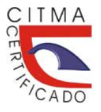PRONÓSTICOS DEL VOLUMEN DE VENTA DE MANGO MEDIANTE MÉTODOS UNIVARIADOS EN SERIES TEMPORALES / MANGO SALES VOLUME FORECAST BY USING UNIVARIATE METHODS IN TIME SERIES
Palabras clave:
mango como fruta fresca, medidas de error, modelos univariados, pronósticos de ventas, series temporalesResumen
La elaboración de pronósticos a menudo se puede ver afectada por la insuficiencia o escasez de información para construir modelos explicativos y la carencia de observaciones para construir modelos de pronóstico con datos de frecuencia anual. Por ello, esta investigación emplea métodos univariados para la elaboración de pronósticos ante la escasez de información y usa pronósticos de frecuencia mensual para ofrecer soluciones a las problemáticas inicialmente planteadas. En este sentido, se utilizaron ocho métodos de pronóstico univariados, donde, debido a las características de las ventas, dos de ellos fueron métodos especializados para pronosticar en presencia de demanda intermitente. Además, se propuso una medida de evaluación de pronósticos para el caso en que se desee obtener la importancia combinada de los pronósticos a más de un nivel de agregación. Los modelos ganadores fueron un Alisamiento Exponencial con componente de error multiplicativa, tendencia aditiva y estacionalidad aditiva y un Alisamiento Exponencial con componente de error multiplicativa, tendencia aditiva-amortiguada y estacionalidad aditiva, cuyos valores para la medida de evaluación propuesta fueron de 11464.41 y 16883.80 respectivamente y las sumas de los pronósticos de la etapa esperada de venta solo se desviaron en un 3.49 % y un 1.19 % respectivamente.Citas
ATHANASOPOULOS, G. ... [et al.] (2017). Forecasting with temporal hierarchies. European Journal of Operational Research, Vol. 262, No. 1, pp. 60-74.
BOX, G.E.P. y JENKINS, G.M.: (1976). Time series analysis: forecasting and control. Revised. San Francisco: Holden-Day.
BROCKWELL, P.J. y HYNDMAN, R.J. (1992). On continuous-time threshold autoregression. International Journal of Forecasting, Vol. 8, No. 2, pp. 157–173.
CERQUEIRA, V., TORGO, L. y SOARES, C. (2019). Machine Learning vs Statistical Methods for Time Series Forecasting: Size Matters.
CROSTON, J.D. (1972). Forecasting and Stock Control for Intermittent Demands. Journal of the Operational Research Society, Vol. 23, No. 3, pp. 289–303.
DICKEY, D.A. y FULLER, W.A. (1979). Distribution of the Estimators for Autoregressive Time Series with a Unit Root. Journal of the American Statistical Association, Vol. 74, No. 366a, pp. 427-431.
ELLIOTT, G., GRANGER, C.W.J. y TIMMERMANN, A. (2006). Handbook of economic forecasting. First Ed. Amsterdam: Elsevier North-Holland.
FILDES, R. …[et al.] (1998). Generalising about univariate forecasting methods: further empirical evidence. International Journal of Forecasting, Vol. 14, pp. 339-358.
FRANSES, P.H., PAAP, R. y VROOMEN, B. (2004). Forecasting unemployment using an autoregression with censored latent effects parameters. International Journal of Forecasting, Vol. 20, No. 2, pp. 255–271.
GARDNER, E. y MCKENZIE, E. (1985). Forecasting Trends in Time Series. Management Science, Vol. 31, pp. 1237-1246.
GOOIJER, J.G. de y HYNDMAN, R.J.(2005). 25 Years of IIF Time Series Forecasting: A Selective Review. Monash, Australia: 2005. 12/05.
GRAMBSCH, P. y STAHEL, W.A. (1990). Forecasting demand for special telephone services: A case study. International Journal of Forecasting, Vol. 6, No. 1, pp. 53-64.
GUJARATI, D.N. y PORTER, D.C. (2010). Econometría Quinta Edición.
HARVEY, A.C. (1990). Forecasting, structural time series models and the Kalman filter. Cambridge, Massachusetts: Cambridge University Press.
HODRICK, R.J. y PRESCOTT, E.C. (1997). Postwar U . S . Business Cycles: An Empirical Investigation. Journal of Money, Credit and Banking, Vol. 29, No. 1, pp. 1-16.
HYNDMAN, R.J. (2006). Another look at Forecast-accuracy Metrics for Intermittent Demand. Foresigth, No. 4, pp. 43-46.
HYNDMAN, R.J. … [et al.] (2018). Forecast: Forecasting functions for time series and linear models. version 8.4.
HYNDMAN, R.J. …[et al.] (2008). Forecasting with exponential smoothing: The state space approach. Springer Science & Business Media.
HYNDMAN, R.J. ...[et al.] (2002). A state space framework for automatic forecasting using exponential smoothing methods. International Journal of Forecasting, Vol. 18, No. 3, pp. 439–454.
IHS MARKIT, (2019ª). Eviews 11. 2019. version 11.
IHS MARKIT: (2019b). Eviews 11 User’s Guide I. Irvine, CA.
IHS MARKIT: (2019c). Eviews 11 User’s Guide II. Irvine, CA.
IIFT (2005). El cultivo del mango en Cuba. Jagüey Grande, Matanzas, Cuba.
KOURENTZES, N. (2013). Intermittent demand forecasts with neural networks. International Journal of Production Economics, Vol. 143, No. 1, pp. 198-206.
KOURENTZES, N. y ATHANASOPOULOS, G. (2020). Elucidate structure in intermittent demand series. European Journal of Operational Research, Vol. 288, No. 1, pp. 141-152.
KWIATKOWSKI, D. …[et al.] (1992). Testing the null hypothesis of stationarity against the alternative of a unit root: How sure are we that economic time series have a unit root?. Journal of Econometrics, Vol. 54, No. 1-3, pp. 159-178.
MAKRIDAKIS, S. …[et al.] (1982). The Accuracy of Extrapolation (Time Series) Methods: Results of a Forecasting Competition. Journal of Forecasting, Vol. 1, No. June, pp. 111-153.
MAKRIDAKIS, S. y HIBON, M. (2000). The M3-competition: Results, conclusions and implications. International Journal of Forecasting, Vol. 16, No. 4, pp. 451-476.
MAKRIDAKIS, S., HYNDMAN, R.J. y PETROPOULOS, F. (2020). Forecasting in social settings: The state of the art. International Journal of Forecasting, Vol. 36, No. 1, pp. 15-28.
MAKRIDAKIS, S., SPILIOTIS, E. y ASSIMAKOPOULOS, V. (2018). Statistical and Machine Learning forecasting methods: Concerns and ways forward. PLOS ONE, Vol. 13, No. 3, pp. 1-26.
MAKRIDAKIS, S., SPILIOTIS, E. y ASSIMAKOPOULOS, V. (2020). The M4 Competition: 100,000 time series and 61 forecasting methods. International Journal of Forecasting, Vol. 36, No. 1, pp. 54-74.
NIKOLOPOULOS, K., BABAI, M.Z. y BOZOS, K. (2016). Forecasting supply chain sporadic demand with nearest neighbor approaches. International Journal of Production Economics, Vol. 177, pp. 139-148.
PARZEN, E. (1982). ARARMA models for time series analysis and forecasting. Journal of Forecasting, Vol. 1, pp. 67-82.
PETROPOULOS, F. y MAKRIDAKIS, S. (2020). The M4 competition: Bigger. Stronger. Better. International Journal of Forecasting, Vol. 36, No. 1, pp. 3-6.
R CORE TEAM, (2019). R: A language and environment for statistical computing. Vienna, Austria: R Foundation for Statistical Computing.
SARANTIS, N. (2001). Nonlinearities, cyclical behaviour and predictability in stock markets: International evidence. International Journal of Forecasting, Vol. 17, No. 3, pp. 459–482.
STELLWAGEN, E.A. y GOODRICH, R.L. (1991). Forecast Pro-Batch Edition. Belmont, MA: Business Forecast Systems, Inc.
SVETUNKOV, I. y BOYLAN, J.E. (2017). Multiplicative State Space Models for Intermittent Time Series. Lancaster: November.
SYNTETOS, A.A., ZIED BABAI, M. y GARDNER, E.S. (2015). Forecasting intermittent inventory demands: simple parametric methods vs. bootstrapping. Journal of Business Research, Vol. 68, No. 8, pp. 1746-1752.
TONG, H. (1983). Threshold models in non-linear time series analysis. 1. New York: Springer-Verlag, Lecture Notes in Statistics.
























